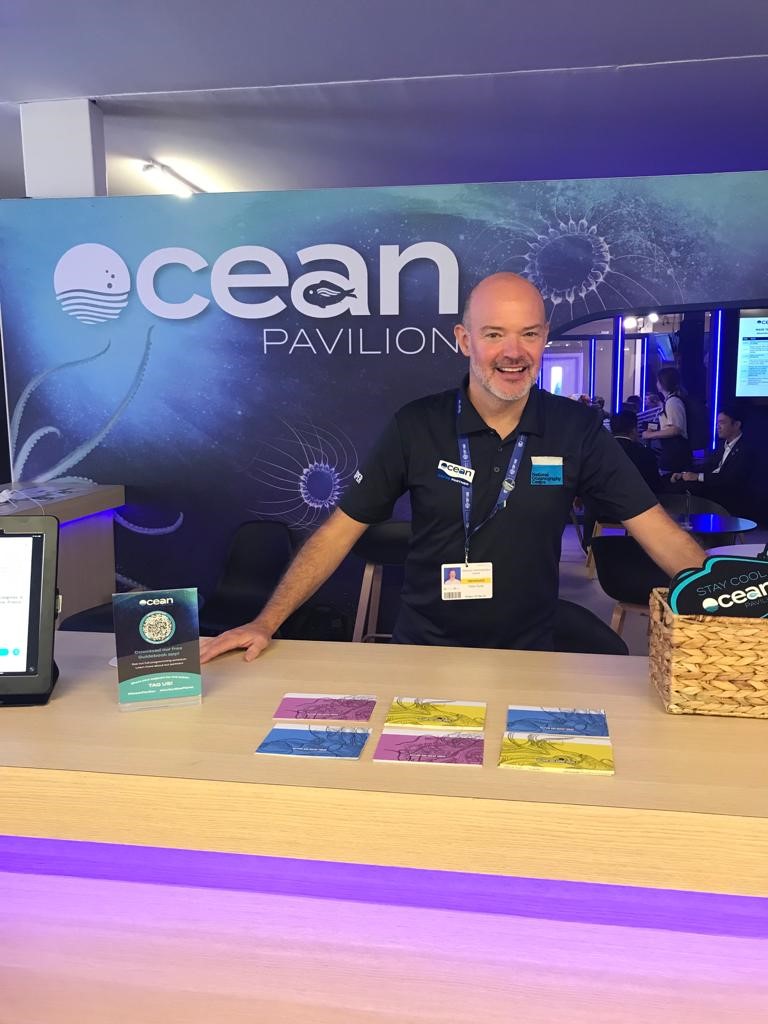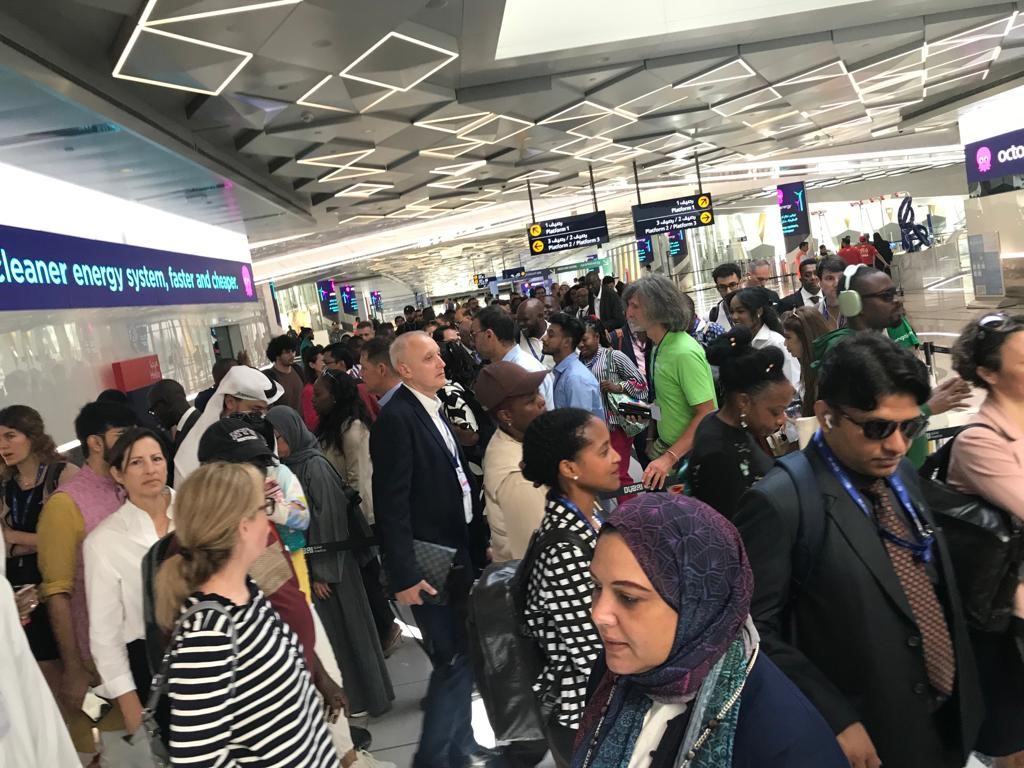NOC's Head of Marketing Peter Ryde is part of our COP28 delegation, championing the ocean at the Ocean Pavilion.

Friday 1st of December saw the official opening of the Ocean Pavilion at COP28. This initiative brings together 34 ocean science and closely related organisations under one overarching objective – to raise awareness of the importance of the ocean and place it front and centre of the climate change discussion. After all, it's said that a healthy ocean is a healthy planet.
So many previous COPs have overlooked the ocean and its important role in regulating the temperature and atmosphere of our planet.
I can sense that our voices are finally being heard as they grab the attention of some politicians and policymakers, but it still feels like only the awakening.
Indeed, plenty of people that I have spoken to whilst hosting visitors to the Ocean Pavilions reception desk shared this view, and with high-profile figures such as John Kerry, Leonardo DiCaprio and Prince Albert of Monaco getting behind the cause, we must be heading in the right direction. However, the position of the Ocean Pavilion at the back end of the blue zone helps to put things back into perspective, and I should not get too excited at the thought of the ocean being front and centre. Quite simply, the need to accelerate awareness of the ocean's role as a key indicator of climate change is essential.
What is the Ocean Pavilion?
The Ocean Pavilion brings together world leaders in ocean science, engineering, and policy to carry the

message that the ocean matters to everyone, everywhere and that science must lead the way.
COP27 in Sharm El Sheikh was the COP where the ocean was first represented in such a collaborative way. There were just 12 partners but no in-your-face logos or competition to be heard over others, just one voice championing the ocean.
This year, the Pavilion has shifted through the gears to provide a commanding and prominent space in the nature zone. Having had the privilege to represent NOC at both COP27 and now COP28, the evolution of the pavilion is very impressive. The ocean theatre is bigger, the collaborative working space is buzzing, and the new immersion theatre is a tranquil escape away from the heat, bustle and pavement pounding of this COP.
Besides an impressive new Pavilion, I’ve noticed an evolution in the rhetoric from last year from informing about the risks to and from the ocean to adaptation but also hope on ways to help mitigate climate change. There is more talk of blue carbon and the early signs of the conversation starting to link science and finance but I hope that this doesn’t act as a distraction or a way from having to reduce emissions.
What is the sentiment of COP28 so far?
Whilst the Ocean Pavilion is wall-to-wall optimism, I’ve sensed that many others representing nature are both exhausted and frustrated by the lack of pace of change. New pledges indeed being made are evidence that some ground is being made but the root cause of the problem of drastically reducing emissions from fossil fuels needs to be the priority.
I’ve also spoken to people from developing nations who told me about the damage that a changing climate is inflicting on their country and its poorest communities. I spoke to some very concerned people representing communities from the Pacific that are seeing sea level rise first-hand. They talk about adaption and the real threat of relocating communities far away from their historical homelands. I’ve also spoken to delegates from Nepal and Bhutan who are at COP28 to bring to our attention that climate change is already affecting their country. Melting glaciers, drought, unseasonably warm temperatures and extreme rainfall have impacted crops and livelihoods. Their hope for influencing and speeding up climate action by sharing their experience is infectious and I hope that by giving them a stage to tell their eyewitness accounts, they remain positive at the thought of being here.
Queuing for climate
COP in the UAE is vastly different from Sham el Shaik with the winter heat the only similarity. Apart from

the welcome sun, everything is different. One improvement from last year is the transport. Instead of the bun fight for standing room on a bus to the venue in the mornings, we have the pleasure of a shiny new metro system with the UNFCCC picking up the cost of the ticket.
The one thing that we are all struggling to get used to is the queues. From the moment you get off the metro, you are herded into a long line that zigzags away from the entrance of Expo 2020 toward the motorway. Day one and two of COP saw the arrival of the state leaders and their entourage and with it came the chaos that resulted in a slow march of over 2 hours from the metro to the Ocean Pavilion.
Besides coping with the questions, my advice to anyone coming to COP is to pack your comfy shoes. My average step count during day two was slightly over 20k steps.